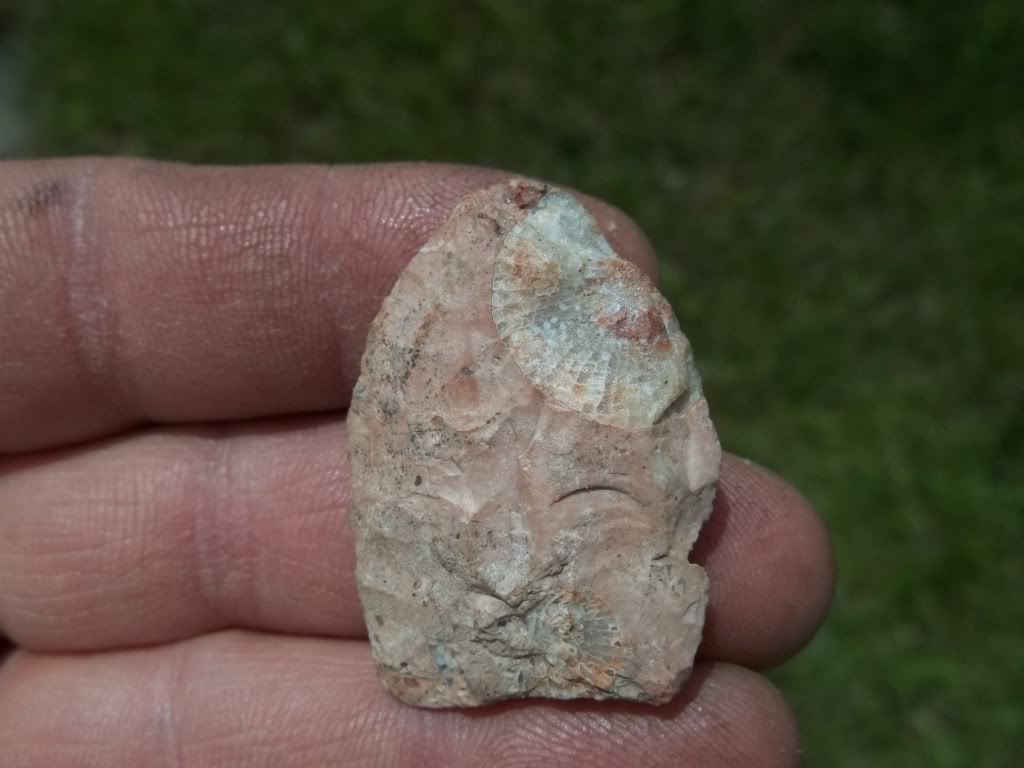found a point with what looks like a barnacle in it. I'll post pics in a second. I'm not sure if this will post. I've tried for a few days with no luck.
Announcement
Collapse
No announcement yet.
fossil in a point
Collapse
X
-
to me, it looks like a grey flint/ chert. Definately not quartz, argillite or quartzite. From where? I have no clue. Smaller artifacts could be from pebbles, and I've cracked open pebbles from the bay that turned out to be grey. Patina can change material from yellow orbrown to black as I am sure you know. Not sure about grey though. I am hoping to learn something though. I havent seen but maybe a one or two chert artifacts with fossils but I've repeatedly read that materials like this can contain fossils. I am purely guessing regarding the barnacle.
Thanks for taking a look.
New Jersey
Comment
-
I'm not sure of the material, but the fossil is an imprint of a bryozoa. Bryozoans are sea plants that anchors themselves to the bottom of the sea, and comes in a variety of shapes. It's hard to pinpoint the exact species.
Comment
-
It's a little hard to identify. I think it's a bryozoan, but could also be a sponge. Either way, each is considered animal instead of plant. The bryozoa would anchor itself to the sea floor, growing upward from tubular like structures. Then they would grow " leafy " structures at the end of the tubes. What you have is the impression left behind when a " leaf " ( for lack of the technical term ), died or broke off the main cluster, fell to the sea floor, became buried under tons of sediment, and became fossilized.
Comment
-
Yep, those are both Bryozoans I would say. You’re seeing a section through a colony of cells forming the skeleton and collectively known as the “zooecia”.

[Section through a Bryozoan Colonial zooecia (Boardman et al 1987)]
Chert forms in limestone deposits from the accumulation degraded calcium carbonate skeletons of corals and the tiny “shells” of Foraminifera (microscopic amoeboid protists). That’s essentially marine (or occasionally freshwater) detritus. It often contains the remnants of larger organisms such as bryozoans, sponges, urchins and molluscs in recognisable form if they are buried quickly enough that they fossilize before they decompose. The skeletal parts of the organisms are mineralized by replacement with silica under heat and pressure as the rock layers increase in depth.
I keep six honest serving-men (they taught me all I knew); Their names are What and Why and When and How and Where and Who.
Comment




Comment